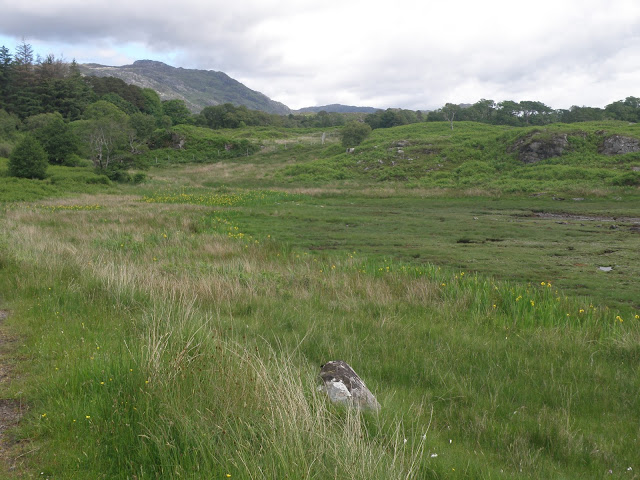This last weekend I visited John
Bridges whose spectacular stacked shots adorn the UK Hoverflies
Facebook page. John has been a passionate photographer for decades
but as his mobility diminishes he has had to adapt to an increasingly
difficult situation. It is hard for those of us who have no mobility
problems to understand what it is like to have to stop every 20 or 30
yards to alleviate pain in one's legs; yet this is what John battles
with each day. Nevertheless, he is dedicated to his cause and has developed an
amazing ability to record hoverflies by photography and then
retaining specimens for microscopic examination. In doing so, he has
generated some impressive species lists for four or five locations
within a five mile radius of his home in County Durham. The combined species list for these sites is now over 100 species, which that far north is impressive by any measure.
What really struck me about John's
sites is how 'ordinary' they are! I don't mean that in a disparaging
way – quite simply, they are sites that might be encountered in
many urban and sub-urban settings. They are not top-quality nature
reserves but include an urban playing field, a well-used plantation
woodland that is afflicted by teenage firebugs and a steam down what
appears to be a spoil tip. That said, two of them are a shade unusual
because they lie in close proximity to the wonderful Durham coast
where major efforts are ongoing to re-wild the land immediately to
the rear of the Permian limestone cliffs. They include sections of
old/ancient woodland that forms part of the classic 'Dene' landscape
of the Durham coast: deeply incised wooded stream valleys.
 |
| John Bridges at work on the margins of the famous 'Dandelion Field' in South Hetton |
 |
| John making best use of 'old faithful' at Grants Houses - a busy footpath that is a pretty familiar urban setting. |
John's lack of mobility means that he
cannot stray from the path and has to keep to a radius of perhaps 100
metres of his car. His limited mobility means that he pursues
hoverflies in the full gaze of the public and is obviously a
well-known local feature. Everybody knows him and stops to say hello.
Whilst this approach to wildlife recording might not be everybody's
cup of tea, it is one that might be followed by other people with
disabilities.
I would really like to see a project developed to
encourage the disabled to develop similar skills and interests: maybe
a joint venture between wildlife organisations and a disabled
charity? I think there is potential to develop a project that would
attract HLF funding and might make a real difference to the lives of
people with physical disabilities. In doing so, perhaps it would also
alleviate some of the mental disability that can accompany physical
problems. If somebody picked up the baton, I think it is essential that the project had at its heart a focus on helping the disabled as much as to improve biological recording. John has shown what is possible; perhaps others will follow his lead.
 |
| Damp situation at Horden with Equisetum telmateia - usually a sign of base-richness that can be great for soldierflies. |







